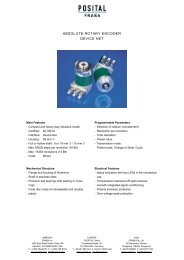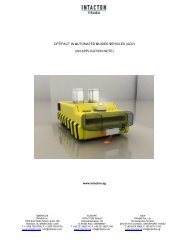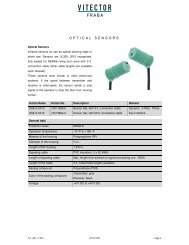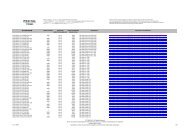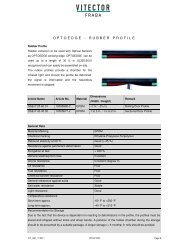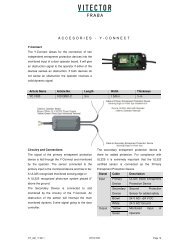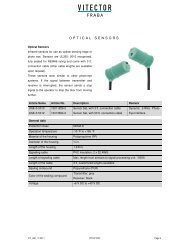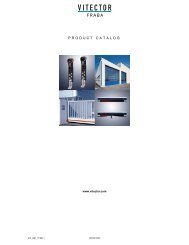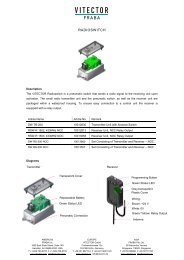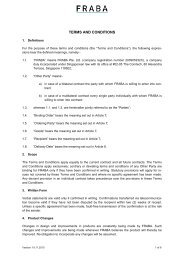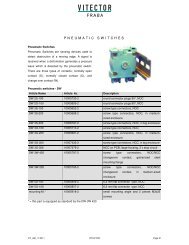Absolute Winkelcodierer OCD Powerlink
Absolute Winkelcodierer OCD Powerlink
Absolute Winkelcodierer OCD Powerlink
You also want an ePaper? Increase the reach of your titles
YUMPU automatically turns print PDFs into web optimized ePapers that Google loves.
OPTIPACT<br />
Small, Flexible, Low Cost Units<br />
OPTIPACT sensors consist of an LED illumination<br />
unit, a 2D camera, miniaturized transmitting and<br />
receiving optics, and integrated analysis and inter-<br />
face electronics. With a size of 98 x 42 x 47 mm<br />
and weighing only 250 grams, the units can be<br />
easily integrated into almost any application. X-<br />
axis and Y-axis position data enable surveillance<br />
of movement in any direction – unlike in other<br />
systems, adjustment and calibration is not re-<br />
quired. The sensors are housed in an IP65-<br />
protected aluminum enclosure. They require a<br />
supply voltage of optionally +5 or 10…30 V. An<br />
incremental interface and an RS232 interface are<br />
available for communication with a higher-level<br />
PLC. INTACTON implements field bus systems or<br />
SSI on request. The sensors’ completely modular<br />
design enables easy adaptation to various specific<br />
requirements. The energy-efficient LED illumina-<br />
tion has the added advantage of requiring no ex-<br />
ternal illumination and hence less repair and ser-<br />
vice costs. Furthermore, unlike conventional optical<br />
systems, the OPTIPACT sensor is completely<br />
maintenance-free.<br />
Function principle<br />
The OPTIPACT system uses a very simple non-<br />
contact, slippage free measurement principle. It is<br />
basically a simple correlation method whereby the<br />
surface is observed by an area camera suitably<br />
illuminated by appropriate light sources. Displace-<br />
ment, direction and velocity are analyzed and<br />
calculated by comparing consecutive high resolu-<br />
tion surface pictures. Image correlation relies on<br />
image overlaps within a captured sequence of<br />
images. With increasing speed the overlap is re-<br />
duced. In consequence, the maximum detectable<br />
velocity depends on the optics design limiting the<br />
size of the field of view of the camera. This para-<br />
meter simultaneously influences the structures<br />
visible on the image, the essential basis of the<br />
image correlation calculations. The OPTIPACT<br />
sensors has different models, OPT-S/F/M, varying<br />
in the design of optics and therefore in the optical<br />
resolution. The optics of OPT-S was designed for<br />
velocities up to 4m/s. The optics of OPT-F has a<br />
four-time higher magnification, thereby the velocity<br />
range decrease to 1m/s, but enables measurement<br />
on fine structured surfaces.<br />
Page 5 Textile Applications Version 1.0<br />
06/2011



